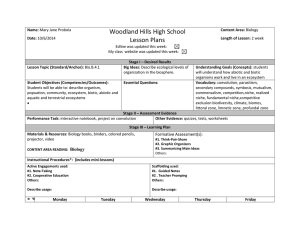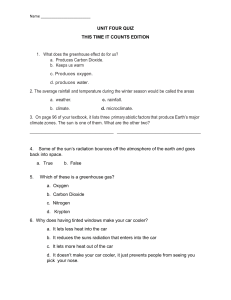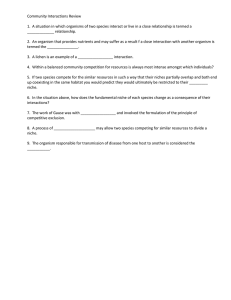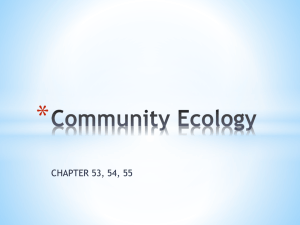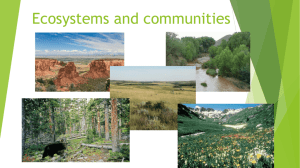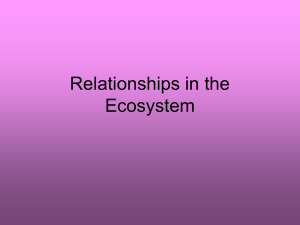Community Ecology
advertisement
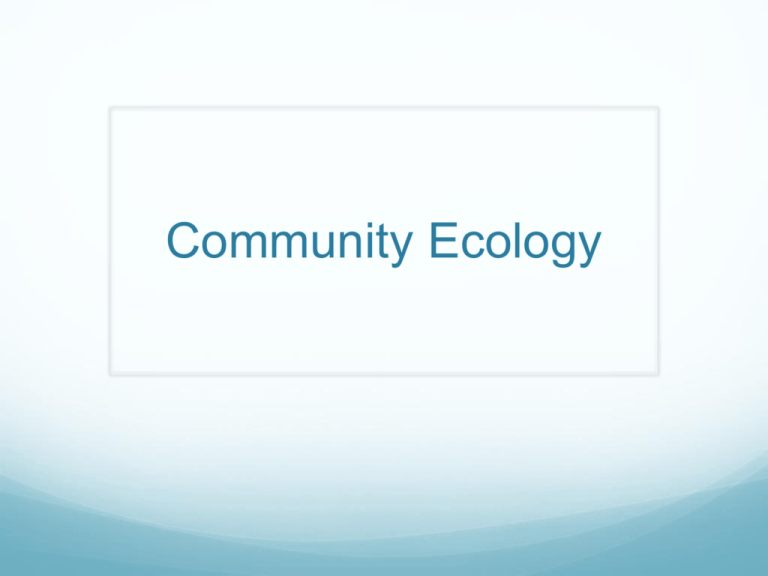
Community Ecology Community group of populations interacting with one another within the same environment. Example: fallen log with all species that live within it. Species diversity increases the closer you get to the equator. Composition of a community – list of species Diversity of a community – includes number of species and their abundance Community models Individualistic Model: HL Gleason Each population in a community is there because its basic needs are met (abiotic) Boundaries between communities are not distinct Interactive model – FE Clements Predicts the same species will recur in communities whose boundaries are distinct from one another, species dependent on biotic interactions Community structure is dependent on both abiotic and biotic factors Island biogeography Size of an island and its distance from a population source affects species diversity. When immigration and extinction rates are equal, an equilibrium in species diversity develops. Structure of the community Habitat – place where an organism lives and reproduces Ecological niche – role it plays in its community, including habitat and interactions with organisms Fundamental niche – all conditions under which the organism can potentially survive and reproduce Realized niche – set of conditions under which it exists in nature. Competition forces an organism to occupy its realized niche, which is smaller than fundamental Competition Interspecific competition – members of different species try to use a resource that is limited. May result in resource partitioning leading to niche specialization. Competitive exclusion principle – no two species can indefinitely occupy the same niche at the same time Predator-prey Predation – when a predator feeds on prey In nature, the presence of predators can decrease prey densities and vice versa Prey defenses Camouflage – ability to blend into a background Walking sticks, katydids Mimicry – when a species resembles another that possesses an antipredator defense Batesian – mimic that lacks the defense Mullerian – mimics that share the same protective defense Symbiotic relationships 3 types: parasitism, commensalism and mutualism Parasitism: parasite derives nourishment from another, a host. Parasites can weaken or kill host, +, - Commensalism – between two species in which one species is benefited and the other is neither benefited nor harmed, +, 0 Mutualism – both members of association benefit, +,+ Mycorrhizae Community Development Ecological succession – change involving a series of species replacements in a community following a disturbance. End result can not be predicted Pioneer species – first species to begin secondary succession Community Biodiversity Intermediate disturbance hypothesis – moderate amounts of disturbances at moderate frequency are required for a high degree of community diversity. Ex. Fire Keystone species – organisms that play a great role in maintaining the function and diversity of an ecosystem than would be predicted by their abundance.


